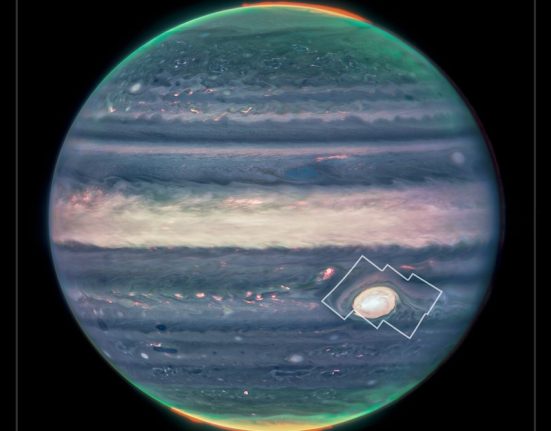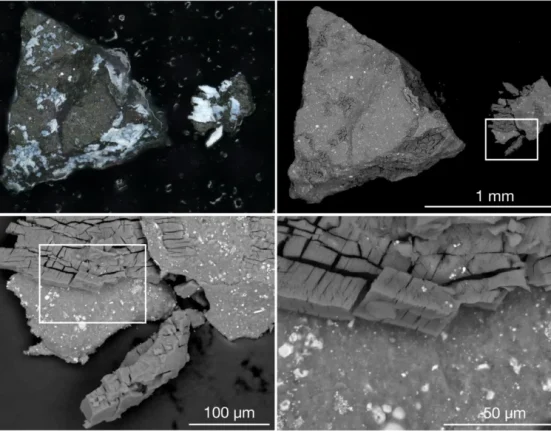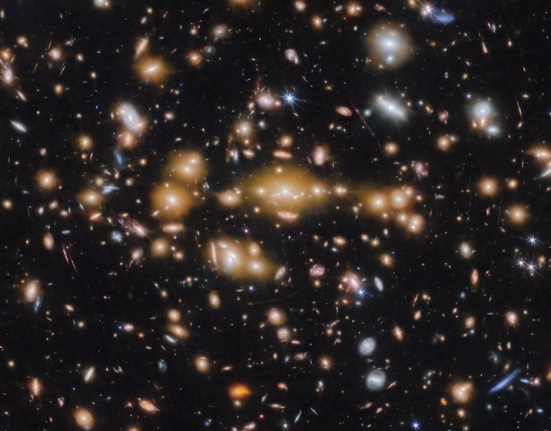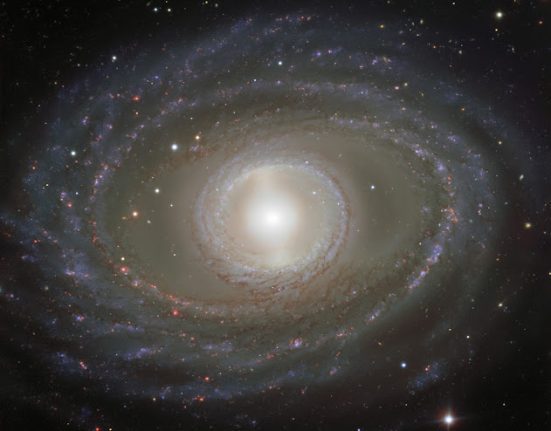An international team of scientists has used the NASA/ESA Hubble Space Telescope to study the atmosphere of the hot exoplanet WASP-39b. By combining this new data with older data, they created the most comprehensive study yet of an exoplanet’s atmosphere. The atmospheric composition of WASP-39b suggests that exoplanet formation processes may be very different from those of the giants of our Solar System.
Research into exoplanet atmospheres can provide new insights into how and where planets form around a star.“We need to look outward to help us understand our own Solar System.” explains principal investigator Hannah Wakeford of the University of Exeter in the United Kingdom and the Space Telescope Science Institute in the United States.
Therefore, the British-American team combined the capabilities of the NASA/ESA Hubble Space Telescope with those of other ground-based and space-based telescopes for a detailed study of exoplanet WASP-39b. They have produced the most complete spectrum of an exoplanet’s atmosphere possible with current technology.
WASP-39b orbits a Sun-like star, about 700 light years from Earth. The exoplanet is classified as “Hot Saturn,” reflecting both its mass similar to that of the planet Saturn in our own Solar System and its proximity to its parent star. This study found that the two planets, despite having a similar mass, are profoundly different in many ways. WASP-39b not only does not have a ring system, but it also has a puffy, cloud-free atmosphere at high altitude. This feature allowed Hubble to look deeply into its atmosphere.
By dissecting starlight filtering through the planet’s atmosphere, the team found clear evidence of atmospheric water vapor. In fact, WASP-39b has three times more water than Saturn. Although the researchers had predicted they would see water vapor, they were surprised by the amount they found. This surprise allowed us to infer the presence of a large number of heavier elements in the atmosphere. This, in turn, suggests that the planet was bombarded by a large amount of icy material that accumulated in its atmosphere. This type of bombardment would only be possible if WASP-39b formed much further from its host star than it is now.
“WASP-39b shows that exoplanets are full of surprises and can have very different compositions than our Solar System.” says co-author David Sing of the University of Exeter, UK.
Analysis of the atmospheric composition and the planet’s current position indicate that WASP-39b likely underwent an interesting inward migration, making an epic journey through its planetary system. “Exoplanets are showing us that planet formation is more complicated and confusing than we thought. And that’s fantastic!”adds Wakeford.
Having made its incredible journey inward, WASP-39b is now eight times closer to its parent star, WASP-39, than Mercury is to the Sun and takes only four days to complete one orbit. The planet is also tidally locked, meaning it always shows the same side of its star. Wakeford and his team measured the temperature of WASP-39b and it reached a scorching 750 degrees Celsius. Although only one side of the planet faces its parent star, strong winds transport heat from the bright side around the planet, keeping the dark side almost as hot.
“Hopefully, this diversity we see in exoplanets will help us discover the different ways a planet can form and evolve.”explains David Sing.
Looking ahead, the team wants to use the NASA/ESA/CSA James Webb Space Telescope, scheduled to launch in 2019, to capture an even more complete spectrum of WASP-39b’s atmosphere. James Webb will be able to collect data on the planet’s atmospheric carbon, which absorbs light of longer wavelengths than Hubble can see. Wakeford concludes: “By calculating the amount of carbon and oxygen in the atmosphere, we can learn even more about where and how this planet formed.”
Image credit: NASA, ESA and G. Bacon (STScI)
Explanation from: https://www.spacetelescope.org/news/heic1804/













Leave feedback about this